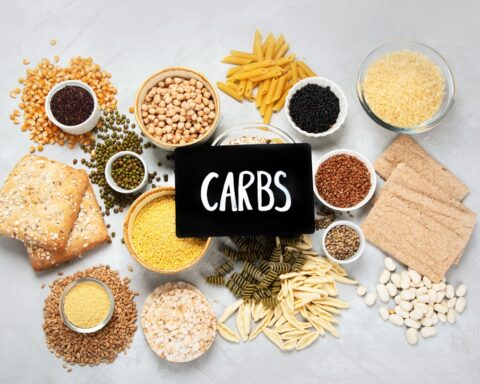Refined carbs include white bread, sugar treats, and pizzas and form the core of carbs eaten in many countries. However, they are dangerous to help and are associated with lifestyle diseases like heart disease, diabetes type 2, and obesity.
Many people enjoy eating white bread, pasta, sugar treats, and pizzas, among other foods in the same category. These are a few examples of refined or simple or bad carbs, which, despite being dangerous to health, are the main carbs’ sources in many countries. They are highly processed and are easily absorbed, leaving one yearning for more, ultimately causing obesity. Most of them also have a high glycemic index and often cause sugar and insulin spikes. Sadly, fluctuating blood sugar and insulin levels eventually culminate into diabetes type 2. This article helps you understand what refined carbs are and why they are not good for your health.
Understanding what refined carbs are
Refined carbs are normal carbs that have been subjected to heavy processing, stripping off their fiber, bran and nutrient content. They are classified into two main categories;
- a. Refined cereals comprise whole cereals whose bran, germ and fiber contents have been removed and include white rice, white flour, white used to prepare white bread and most baked products, pasta, pastries, etc.
- b. Sugar comprises refined and processed sugars, like table sugar, agave, and high fructose corn syrups.
Refined carbs are typically called empty calories because their fiber, mineral, and vitamin contents have been cleared; hence, as one eats them, he only takes calories and not any other nutritional benefits. When fibers, bran, and germ are removed from these foods, they become easily digestible, and one craves more and more, increasing obesity risk. Besides, they have a high glycemic index, hence the blood and insulin levels spike after taking them, increasing one’s risk for getting diabetes type 2, not to mention the many lifestyle conditions linked to taking these carbs. Sadly, many countries rely on simple carbs as their main course and take soda, snacks, breakfast cereals, pasta, and all processed foods, increasing their risks of chronic diseases.
Refined versus whole carbs: fiber and macronutrient contents
One thing that makes refined carbs bad for health is because they have been stripped off the macronutrient and fiber contents, which carry all their health benefits. However, whole carbs have all these intact, which is why they are healthy and are not linked to the previously mentioned lifestyle diseases. In fact, healthy living requires eating plant-based foods without stripping off their fiber and macronutrient content. A typical whole carb comprises three parts;
- Bran- the outermost layer, often pretty hard. It is an essential part of cereal as it houses fiber, antioxidants, and some macronutrients.
- Germ- the smallest part, yet equally important. It is like a powerhouse and has plant compounds, antioxidants, fat, carbs, vitamins, and minerals.
- Endosperm- the middle layer, primarily made up of small amounts of protein and chunky carbs.
The breakdown above clearly shows that the bran and germ are the cereal’s most nutritious parts since they house vitamins, minerals, fat, plant compounds, and antioxidants. However, endosperm mainly comprises carbs and small portions of carbs but lacks plant compounds, minerals, and antioxidants. Sadly, as the cereals undergo the industrial refining processes, the germ and bran are removed, but the endosperm is left intact. This means that the nutrients, antioxidants, plant compounds, and vitamins in the bran and germ equally get stripped off as the parts are removed.
Refined carbs comprise starch and small amounts of proteins. This is why they are easily digestible, and one yearns for more after taking them. Some companies fortify refined carbs with synthetic vitamins to cater to the stripped off vitamins and minerals, but this cannot fully make up for lost plant compounds and antioxidants. Besides, not all experts agree that artificial vitamins are good for health and insist that people satisfy their nutritional needs by taking whole foods. Dietary fiber, including soluble and insoluble ones, is good for gut health, digestion, and heart health, which refined carbs lack and cannot make up for.
Refined carbs are linked to overeating and obesity
One challenge with relying on refined carbs as the main course is linked to overeating and obesity. Because these foods are low in fiber and high in glycemic index, they are digested and absorbed faster than whole carbs with fiber content and low glycemic index. The faster they are absorbed, the faster the blood sugar and insulin levels rise, causing short-term fullness, lasting about an hour. This means that after one to two hours, you will be hungry and crave more. The brain cells are signaled and send hunger and reward impulses to hormone secretory glands, and you feel hungrier. As you satisfy the craving and take care of hunger, you risk being overweight or obese. However, whole carbs have fibers, and their glycemic indexes are low, meaning that they take longer to be digested and absorbed, hardly trigger sugar spikes, and leave you feeling full for longer.
Simple carbs are diabetes type 2 and heart disease risk factors
Studies show that relying on refined carbs as your main course increases your risk for heart disease and diabetes type 2. As you take them, they raise blood sugar levels and increase insulin resistance, ultimately resulting in diabetes type 2, a heart disease risk factor. In addition, the highly processed carbs increase the body’s bad cholesterol and triglyceride levels, a risk factor for heart disease and diabetes type 2. Several studies have shown that about 80% of most countries rely on refined carbs as the main course, increasing their risk for heart disease, obesity, and diabetes type 2 by three times.
Conclusion
Refined carbs are normal carbs subjected to industrial processes to remove macronutrients and fibers in the bran and germ, leaving the endosperm, which has carbs and small amounts of proteins. Such carb sources increase one’s risk for heart disease, diabetes type 2, and obesity because they are easily digested and have a low glycemic index. To remain healthy, one needs to stick to whole carbs from grains, nuts, seeds, fruits, legumes, and vegetables.
- WHY CAN DRINKING ALCOHOL TRIGGER ANXIETY? - January 7, 2023
- WHAT IS ORGASMIC MEDITATION? BENEFITS + HOW TO - January 7, 2023
- THE BEST WAYS TO PREVENT WEIGHT GAIN THIS WINTER - January 6, 2023









